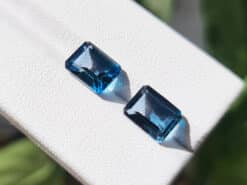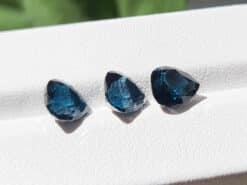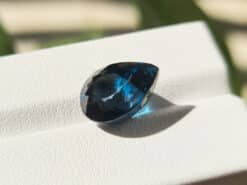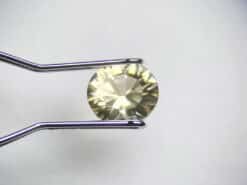Bicolor topaz

Bicolor topaz is a silicate mineral of aluminium and fluorine. With the chemical formula Al2SiO4(F, OH)2.
Buy natural topaz in our gem shop
A silicate mineral of aluminium and fluorine
Topaz crystallizes in the orthorhombic system. And its crystals are mostly prismatic. Terminated by pyramidal and other faces. It is a hard mineral, Mohs hardness of 8.
It is the hardest of any silicate mineral. This hardness combined with its usual transparency and variety of colors means that it has acquired wide use in jewelery. Also as a cut gemstone. As well as for intaglios. And other gemstone carvings.
Named after Topasos Island in the Red Sea. In antique times, the name was probably used for the gemstone that is now known as Peridot.
Dispersion
Bicolor topaz has a relatively low index of refraction for a gemstone. And so stones with large facets or tables do not sparkle as readily as stones cut from minerals with higher refraction indices. Though quality colorless topaz sparkles and shows more “life” than similarly cut quartz.
When given a typical “brilliant” cut, It may either show a sparkling table facet. Surrounded by dead-looking crown facets. Or a ring of sparkling crown facets. With a dull well-like table.
Occurrence
Topaz is commonly associated with silicic igneous rocks. Of the granite and also rhyolite type. It typically crystallizes in granitic pegmatites. Or also in vapor cavities in rhyolite lava. We can also found it with fluorite and cassiterite in various areas.
Formula: Al2(SiO4)(F,OH)2
Lustre: Vitreous
Hardness: 8
Specific Gravity: 3.4 – 3.6
Crystal System: Orthorhombic
Bicolor topaz from Africa
















